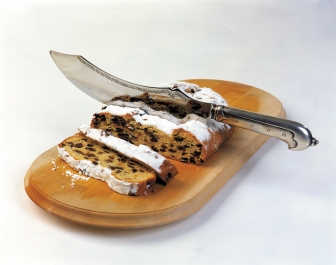There is an old adage in the southern United States that says: "Peas for pennies, greens for dollars, and cornbread for gold." Black eyed peas are always served in a dish like Hoppin' John as it is considered to represent prosperity, especially when served with collard greens.
In our region it is customary to serve pork and sauerkraut on New Year's Day, and much to my wife's dismay that will be served at our small table, along with some smashed red skinned potatoes and some roasted root vegetables. Pork symbolizes progress since the pig always roots forward. It is said that pork is also rich in fat content which denotes wealth and prosperity. That meal is part of the rich Pennsylvania German heritage brought to the New World by the immigrants who settled in our area. Pork is also eaten in places like Cuba, Portugal, Hungary and Austria.
There are also some foods to avoid on New Year's Day as they are considered bad luck. Never serve lobster for instance. They move backward, symbolizing setbacks for the year ahead. That goes for chicken as well since they scratch the ground in a backward motion which is said to bring regret and is also a sign of dwelling in the past. In fact, it is bad luck to serve any winged foul on January 1st because good fortune could easily fly away.
Here's wishing you a safe, healthy and prosperous New Year. And may your calories be just enough to delight both your taste buds and your stomach!




